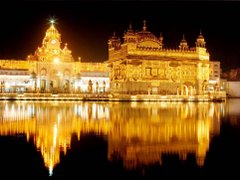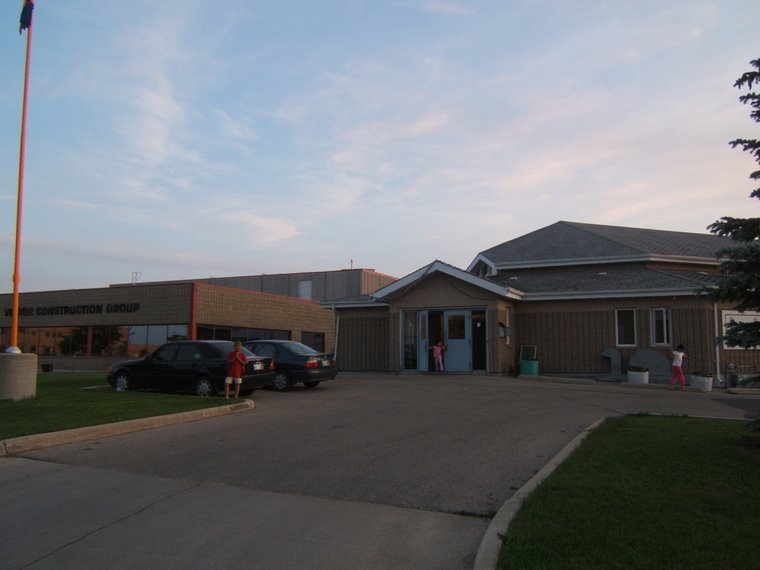
As the world remembers its fallen heroes of ‘Ypres’ a recent discovery of a WWI Medal Reveals the Story of a Forgotten Sikh Canadian Hero and has once again highlighted the sacrifices Sikhs all over the world have made to uphold justice, equality and peace.
Visible minorities were not welcome into the Canadian army when war broke out in 1914. Canada joined the war the day after Britain declared war on Germany. When 50 blacks from Sydney, Nova Scotia volunteered their services they were told, "This is not for you fellows, this is a white man's war." By 1915 blacks, aboriginals, Japanese Canadians and other minorities were allowed to join the military, but mainly in segregated units. But interestingly, documentary evidence from different sources shows that Sikhs were integrated into mainstream Canadian battalions, which included Buckam Singh and eight other Sikh Canadian soldiers and were not placed into one of the existing segregated units.
The bravery of this Sikh, born on December 5, 1893 at Mahilpur in the Hoshiarpur district of Punjab, first came to light when he was reported in the list of injured for the day by ‘The Toronto Daily Star’ on August 9th, 1916. PTE Bukum Singh enlisted with the 59th Infantry Battalion of the Canadian Expeditionary Force in 1915. His father was Badan Singh Bains and his mother was Chandi Kaur. Canadian soldiers arrived in England in the September of 1915 and were put in reserve battalions till ready to see action in some part of Europe. Bukum Singh and his battalion were sent to France in January of 1916 and were transferred from the 39th Reserve Battalion to the 20th Battalion where he remained till the end of his part in the war.
Flanders is a region in Belgium and the principal town around which the fighting in Flanders revolved was Ypres, and the area around the town of Ypres was also known as the Salient. This sector saw some of the most gruesome action recorded in the history of any war. From October of 1914 till the end of the war in November 1918 trenches of Ypres swallowed many a brave human soul on either side.
Buckam Singh’s 20th Battalion was assigned to the 4th Brigade, and sent to the front on the Ypres Salient, near Messines. The winter of 1915-16 saw many a soldiers battling lice, trench foot, and disease besides the enemy. In March 1916, steel helmets were issued to all ranks. Pictures from the war front and documentary evidence points, though, to the fact that Sikhs fought the war in their turbans and many British generals make a noteworthy mention of this fact (see below). Bukum Singh’s 20th Battalion has been mentioned to have recaptured a sector in this region and held on to it through a month of concentrated shelling. The total loses of the 4th Brigade in that one month were 1373 casualties.
The Toronto Daily Star of Aug 9, 1916 reported: “PTE. BUKUM SINGH, the first Sikh to enlist with an Ontario battalion has been twice wounded since he went to the front. He was engaged as a farm hand for W. H. Moore, of Rosebank Ont., when the call came for active service. He was reported injured for the first time two months ago. His name appears among the wounded in to-day's list. Bukum Singh came to Canada from Punjab in 1907. After mining in British Columbia he came to Toronto about two years ago. He went overseas with a Kingston battalion.”
This was based on an interview by the Toronto Star of Bukum Singh in an army hospital in Manchester, England. While convalescing, he is reported to have developed a respiratory illness. He was treated by Dr. John McCrae during his sickness. Bukum Singh died on August 27, 1919 at age 25 was buried in a soldier’s grave at Mount Hope Cemetery in Kitchener where he rests to this day. His ‘Victory Medal’, commissioned in 1919 reads: 454819 PTE. B. A. SINGH 20 – CAN. INF. A ‘Memorial Cross’ (given to widows and mothers) was also awarded to Buckam Singh's wife Pritam Kaur and another to his mother Chandi Kaur (also received a ‘Memorial Plaque and Scroll’) to recognize their personal loss and sacrifice.
Canadian army was not the only army with Sikh regiments or soldiers in WWI. Sikhs fought in Europe in Belgium and France at Flanders/Ypres, La Bassee, St. Julien, Festubert besides Egypt, Palestine, Mesopotamia, and Gallipoli. At the beginning of the WWI Punjab accounted for 124,000 men in combat ranks as part of the British Army. Three years later, the number had reached a quarter of a million. The Sikhs numbered approximately 65,000 soldiers, or 26% of the Punjabi total, despite representing only 14% of the male population of Punjab of fighting age. Nearly 1,500 distinctions issued for gallantry were awarded to Punjabis, of which 700 went to Sikhs. Besides these distinctions and service medals the Sikhs were awarded many a Victoria Cross.
In the last two world wars 83,005 turban wearing Sikh soldiers were killed and 109,045 were wounded.
“They all died or were wounded for the freedom of Britain and the World and during shell fire, with no other protection but the turban, the symbol of their faith." General Sir Frank Messervy KCSI, KBE, CB, DSO.
During WWI Sikhs were decorated for their bravery with Victoria Cross 10, IOM 100, IDSM 231, DSO 35, MC 46, MM 51, DSM 10. As Sikhs celebrate the birth anniversary of the founder of Sikh faith, Guru Nanak, who gave world the message of universal brotherhood of man, equality and justice, Sikh men and women under Canadian, American, British, Swiss, Pakistani and Indian flags (and countless other) see combat in Iraq, Afghanistan and certain places in Africa, to uphold that universal message.
Sikh National Anthem
Grant me this boon, O Lord:
I may never be deterred from good deeds.
Without fear I enter the battlefield.
With complete resolve I bring victory.
My mind be trained to sing Your praises.
And when my time comes, bring me a valiant death on the battlefield.
By the Tenth Master Guru Gobind Singh (DG p.99)
Proudly support the RED POPPY.


